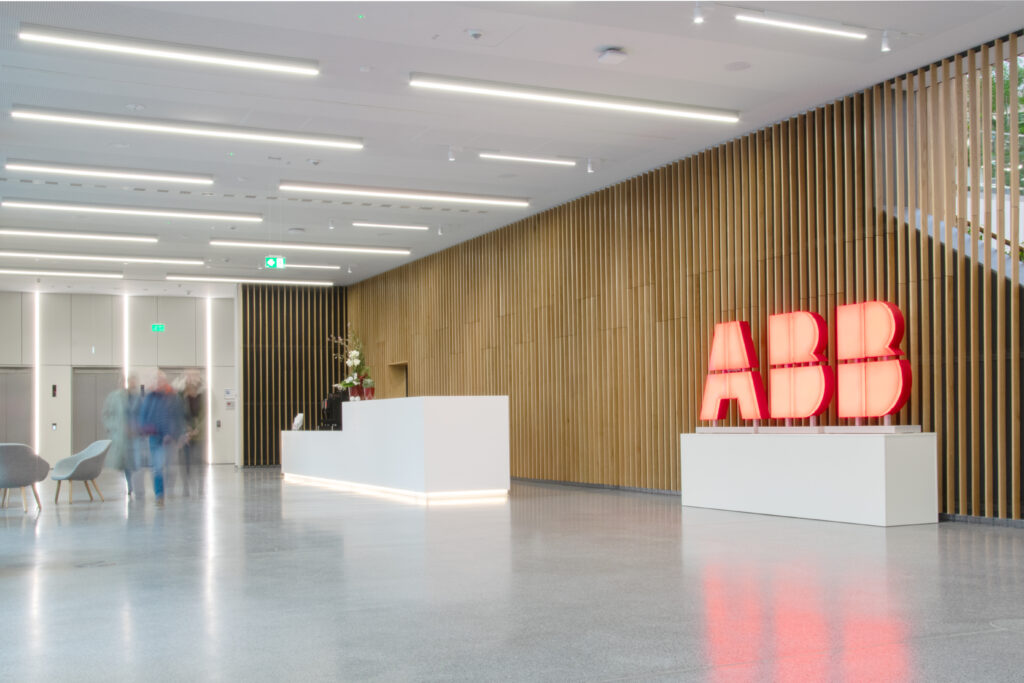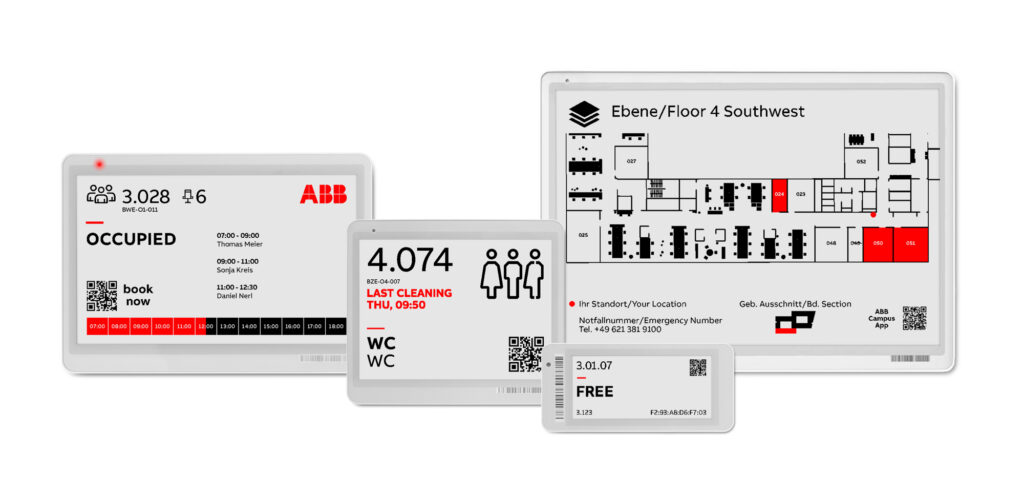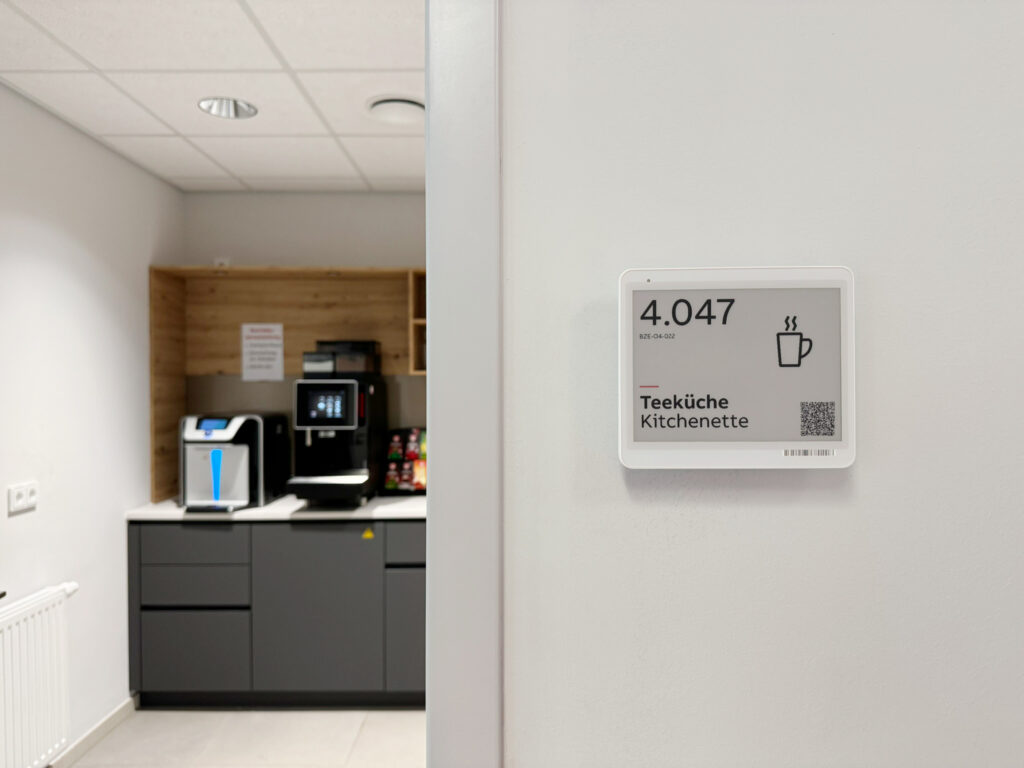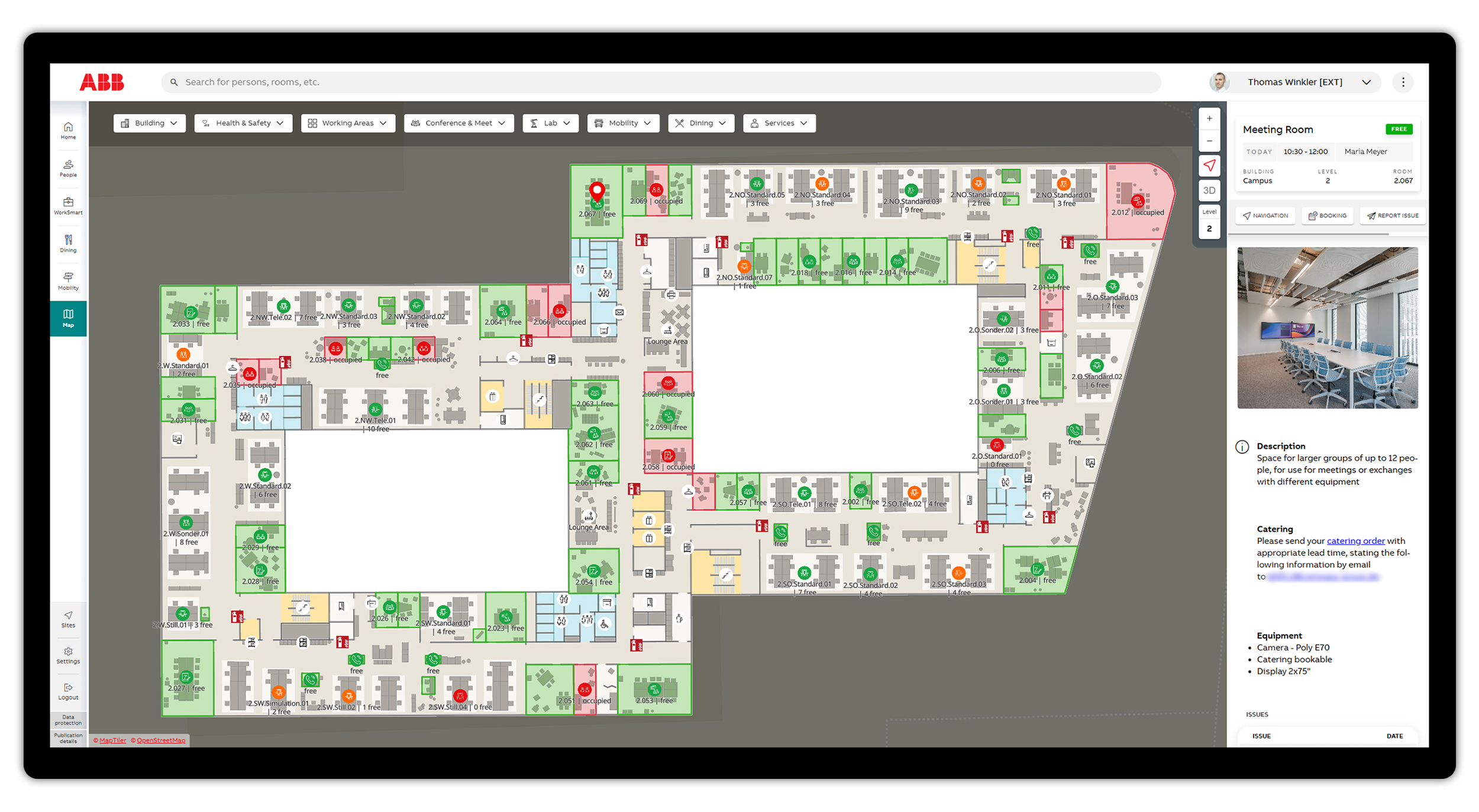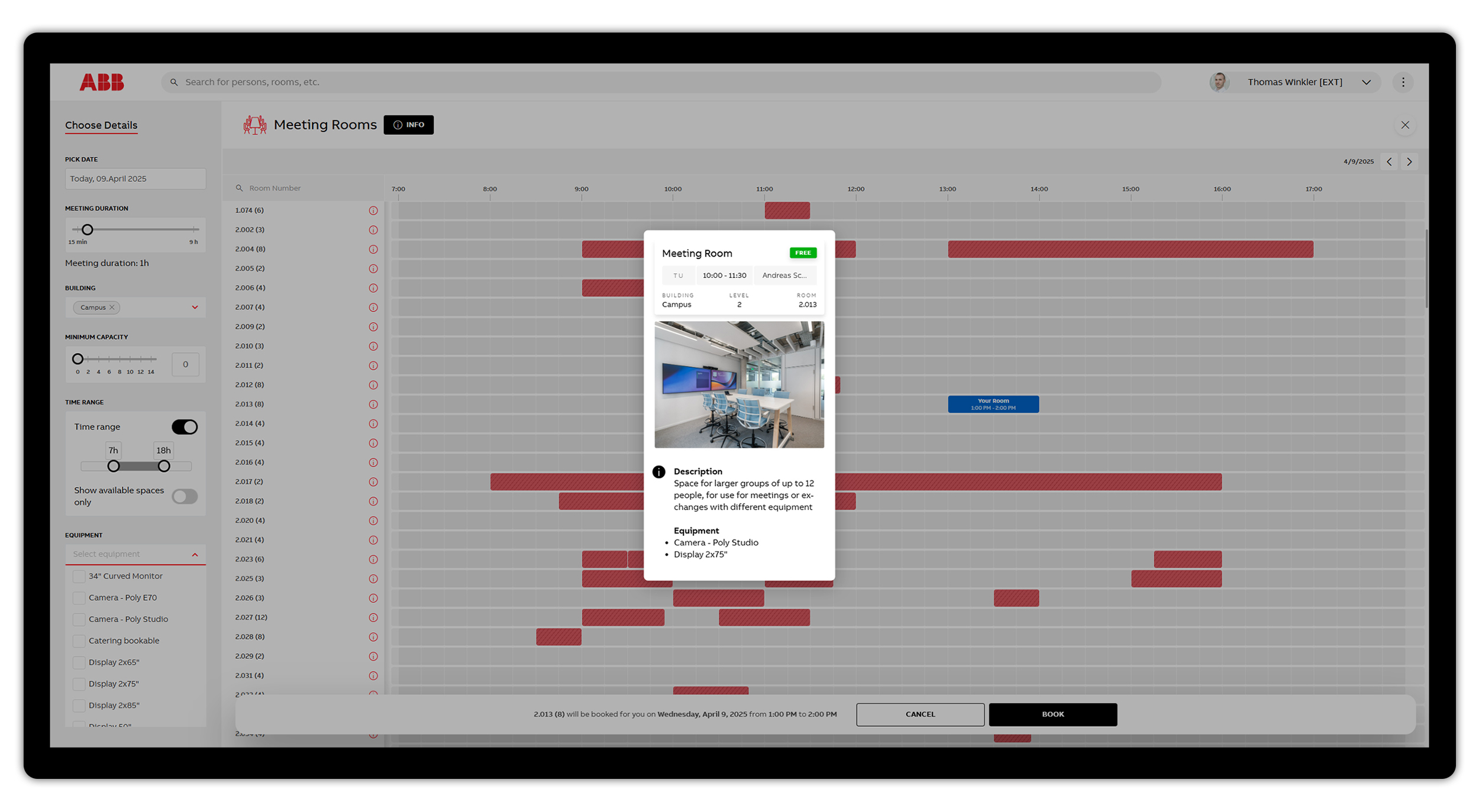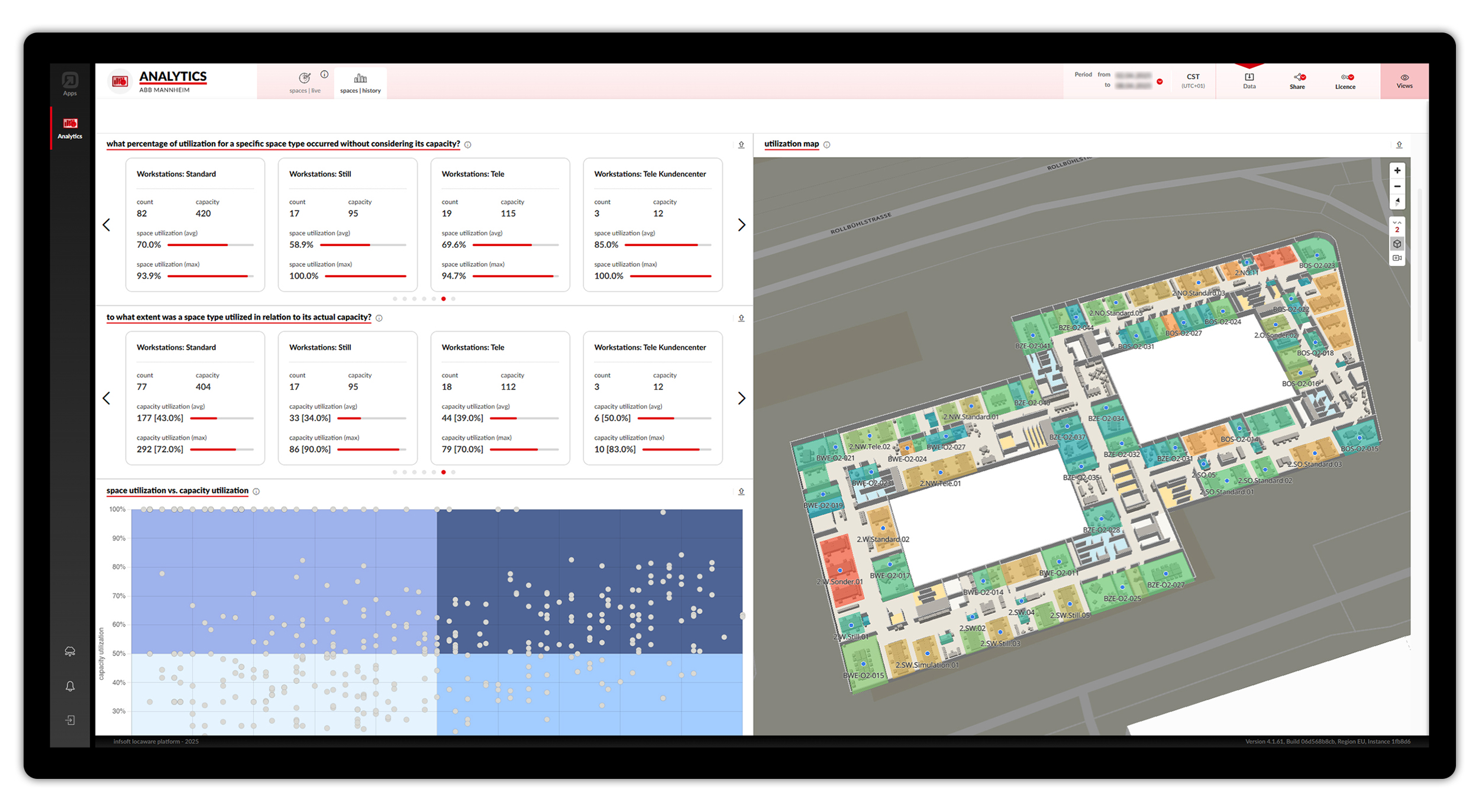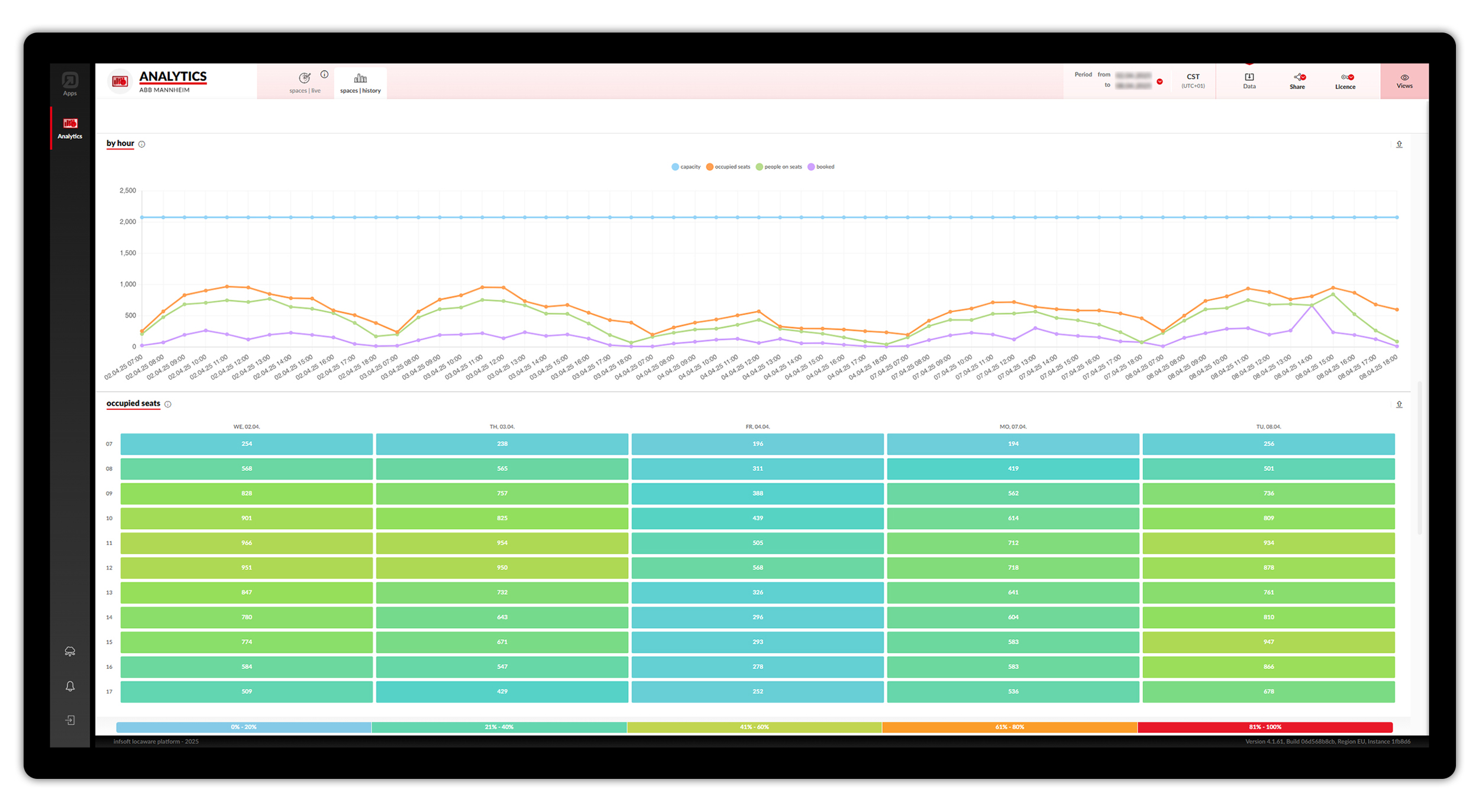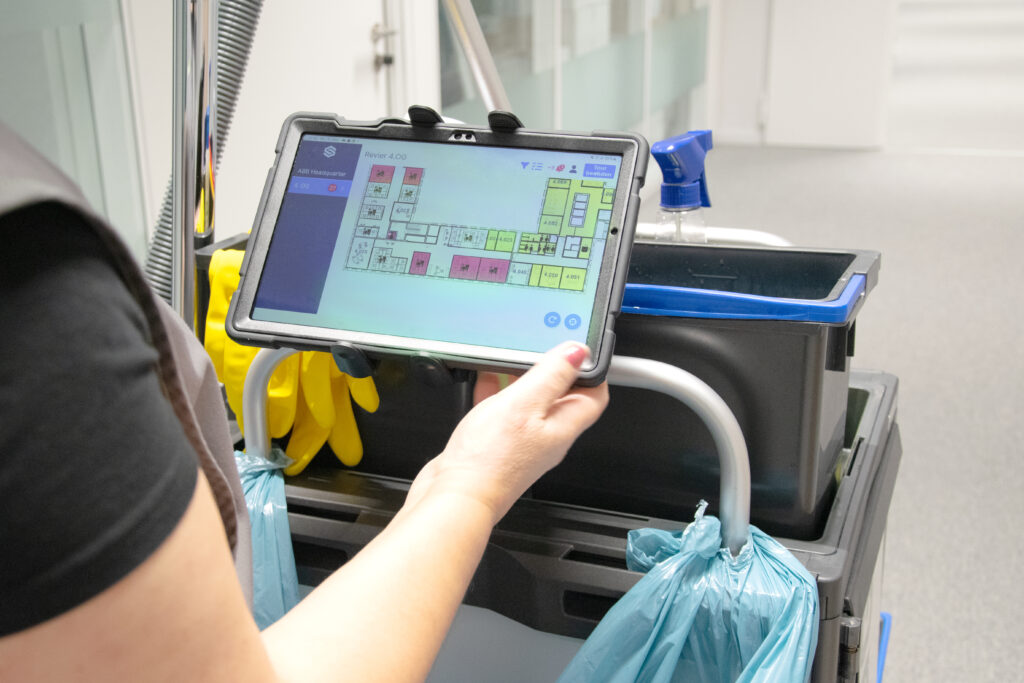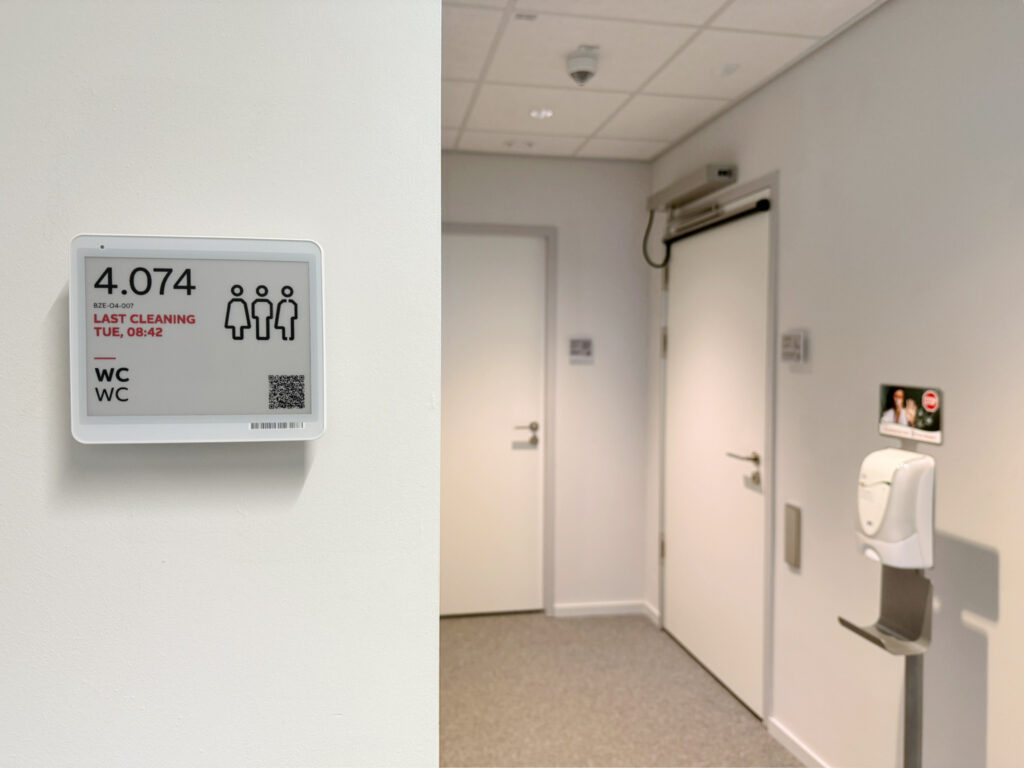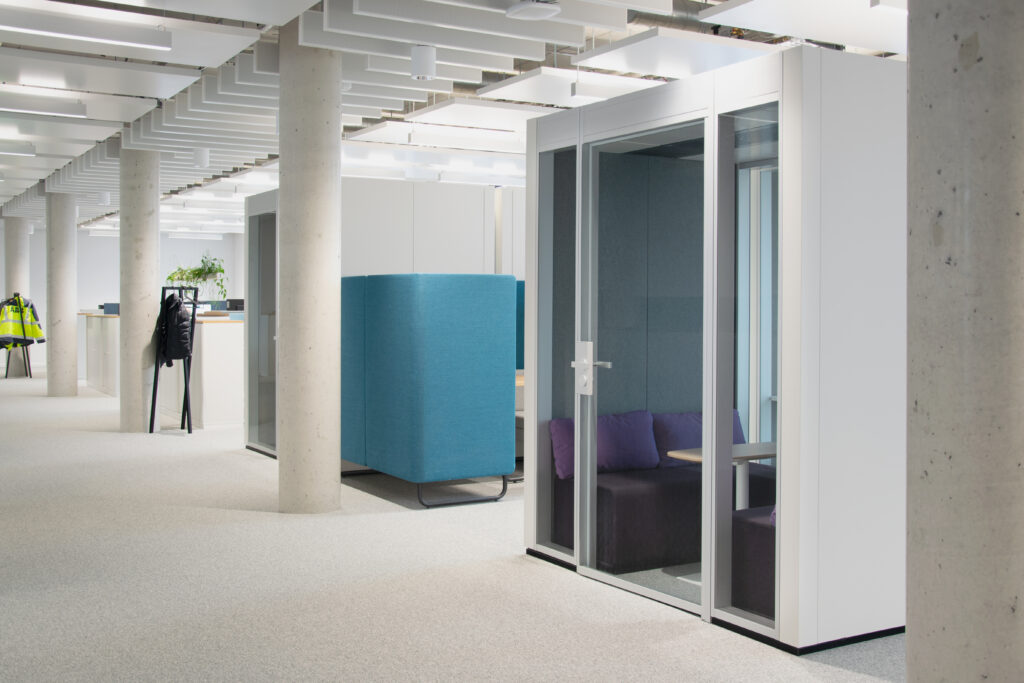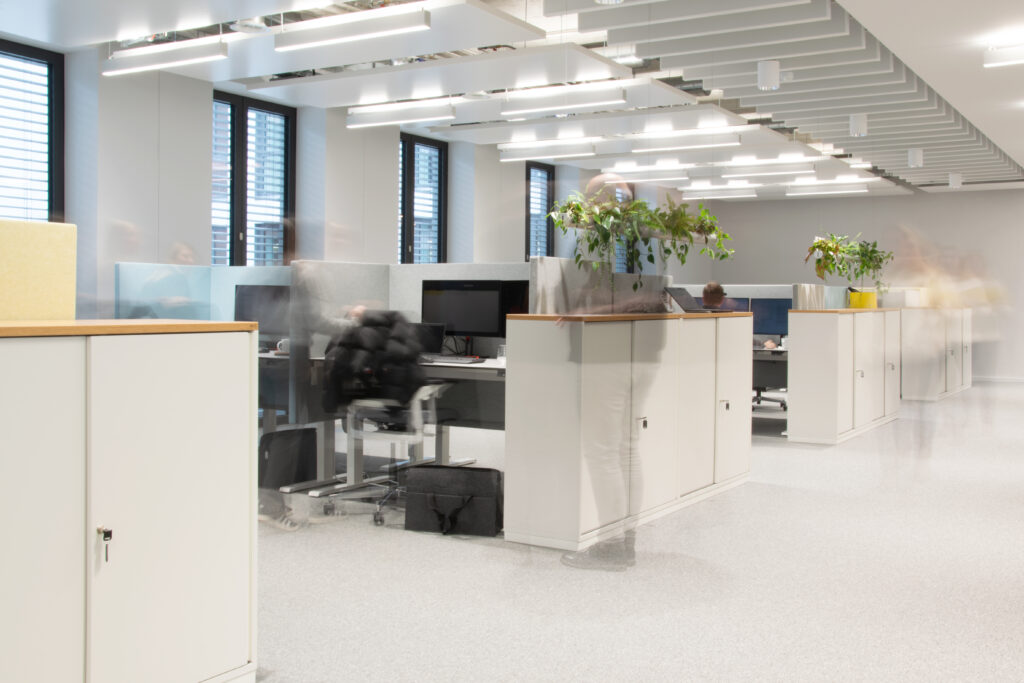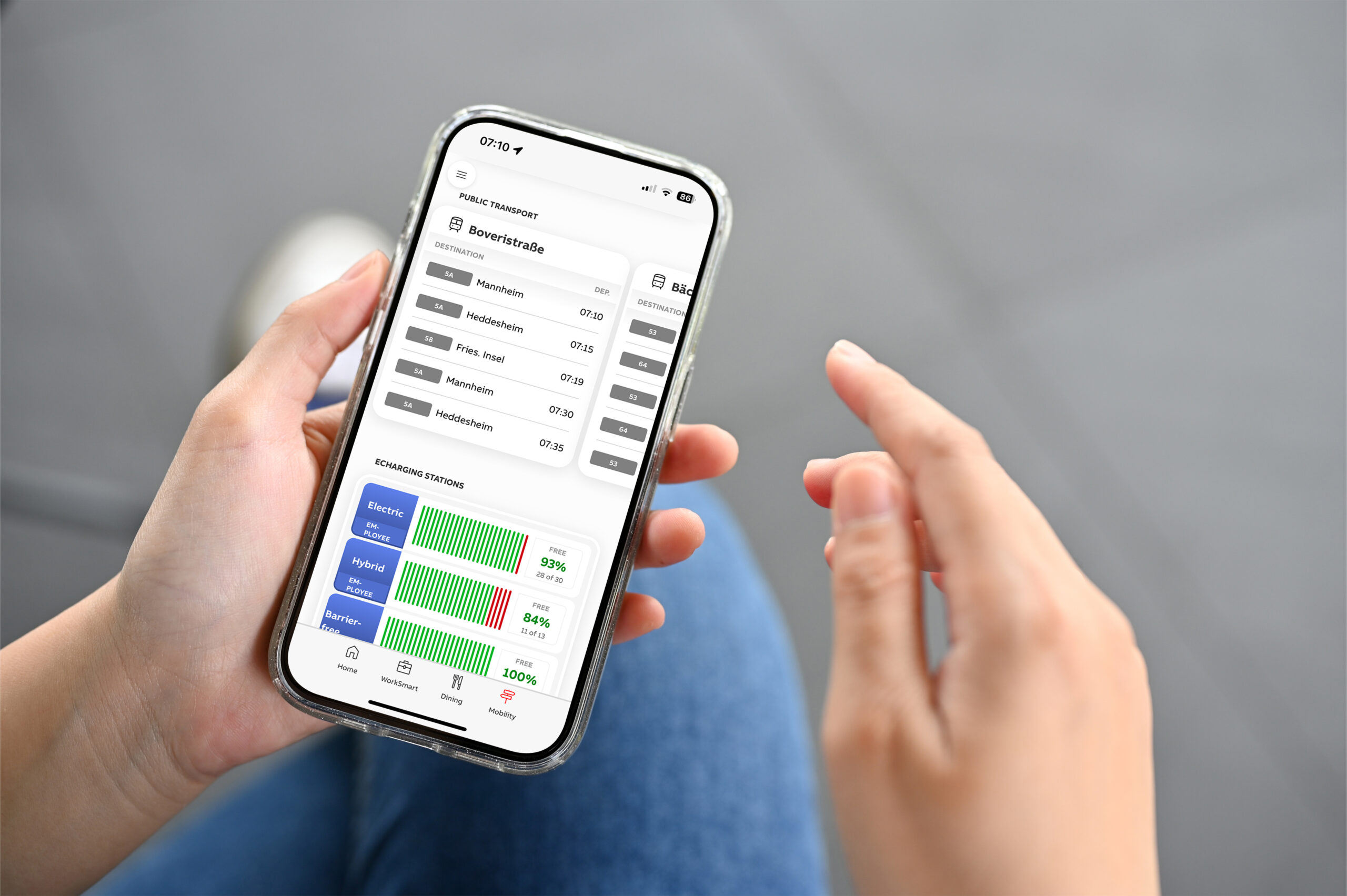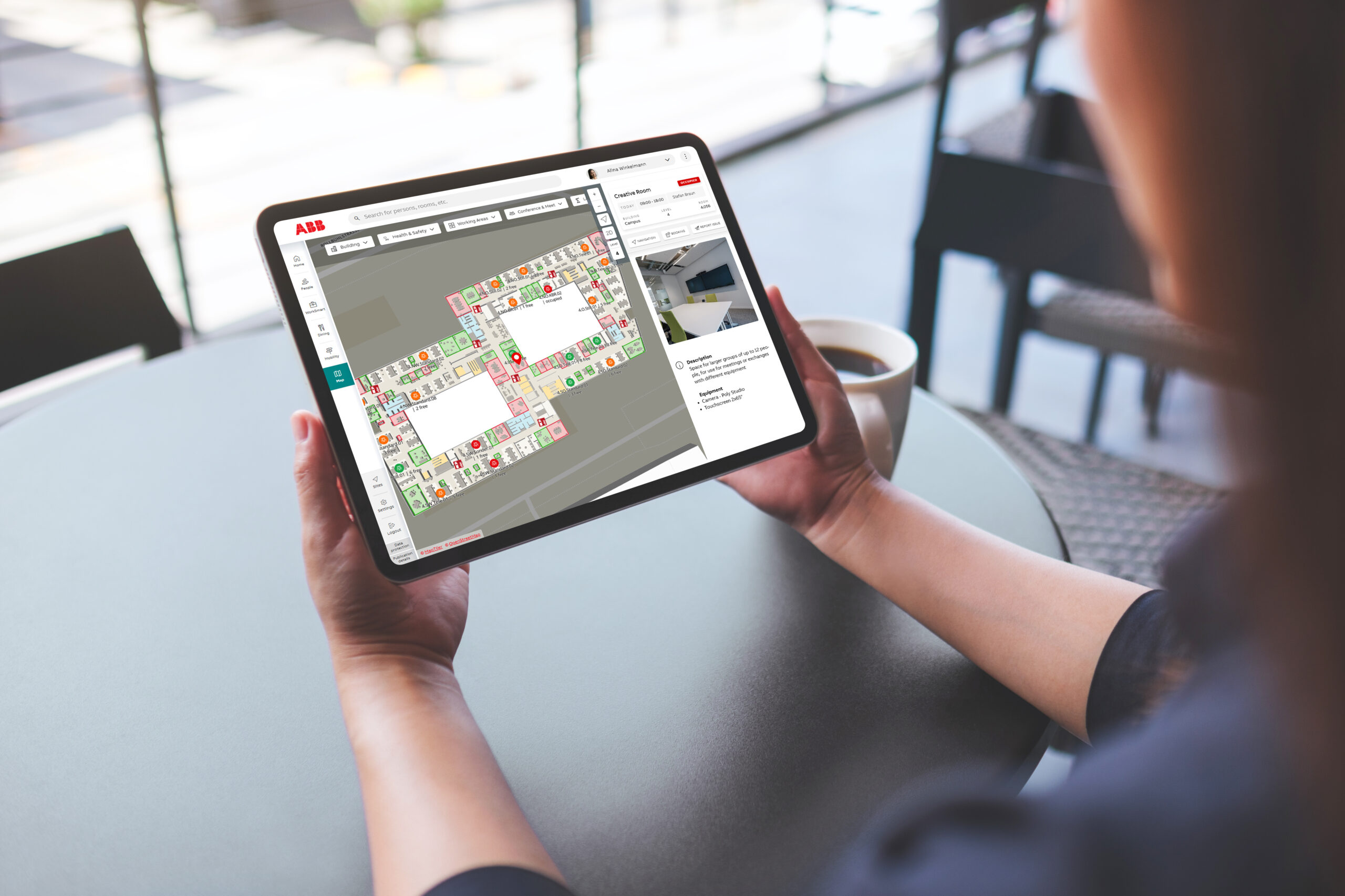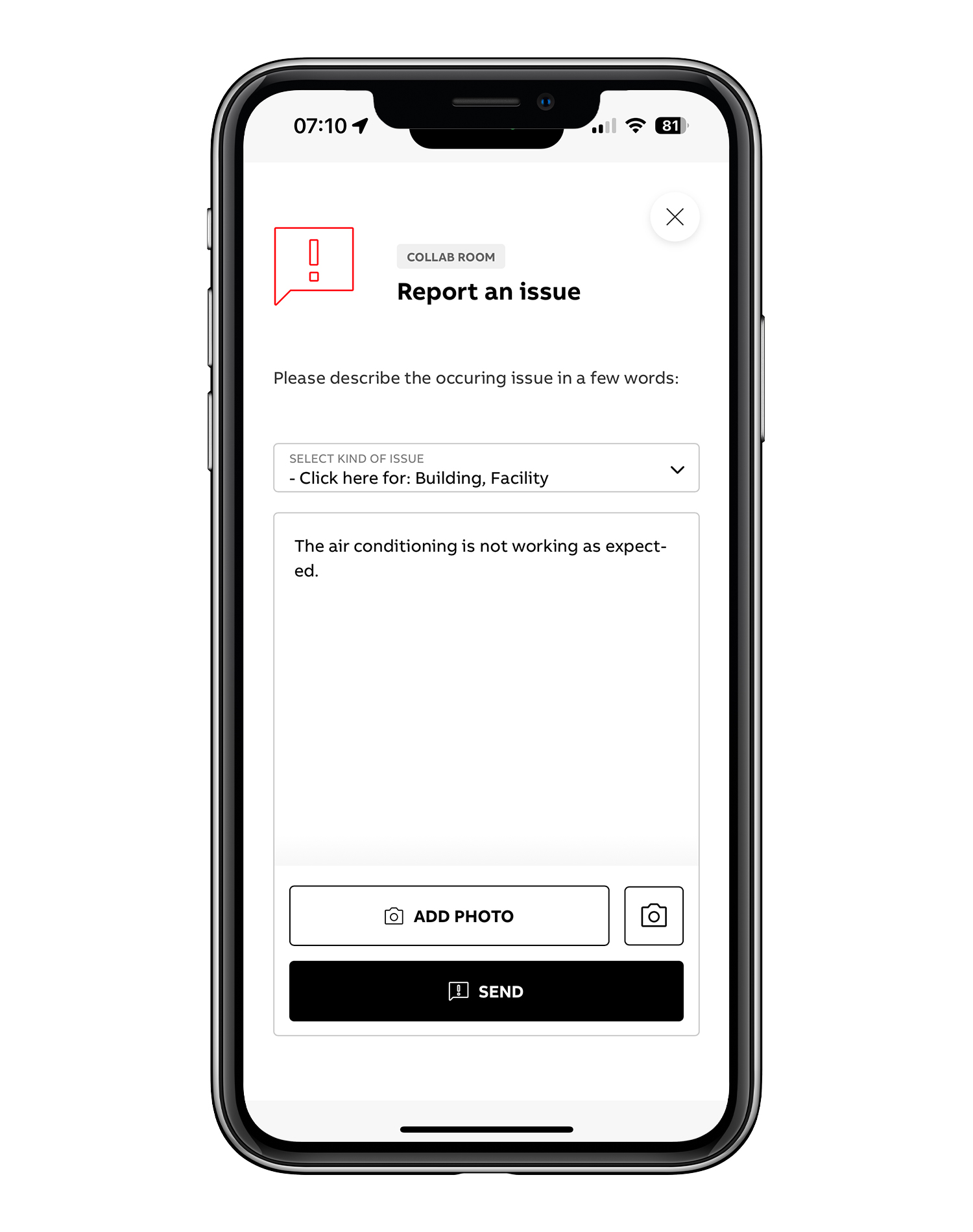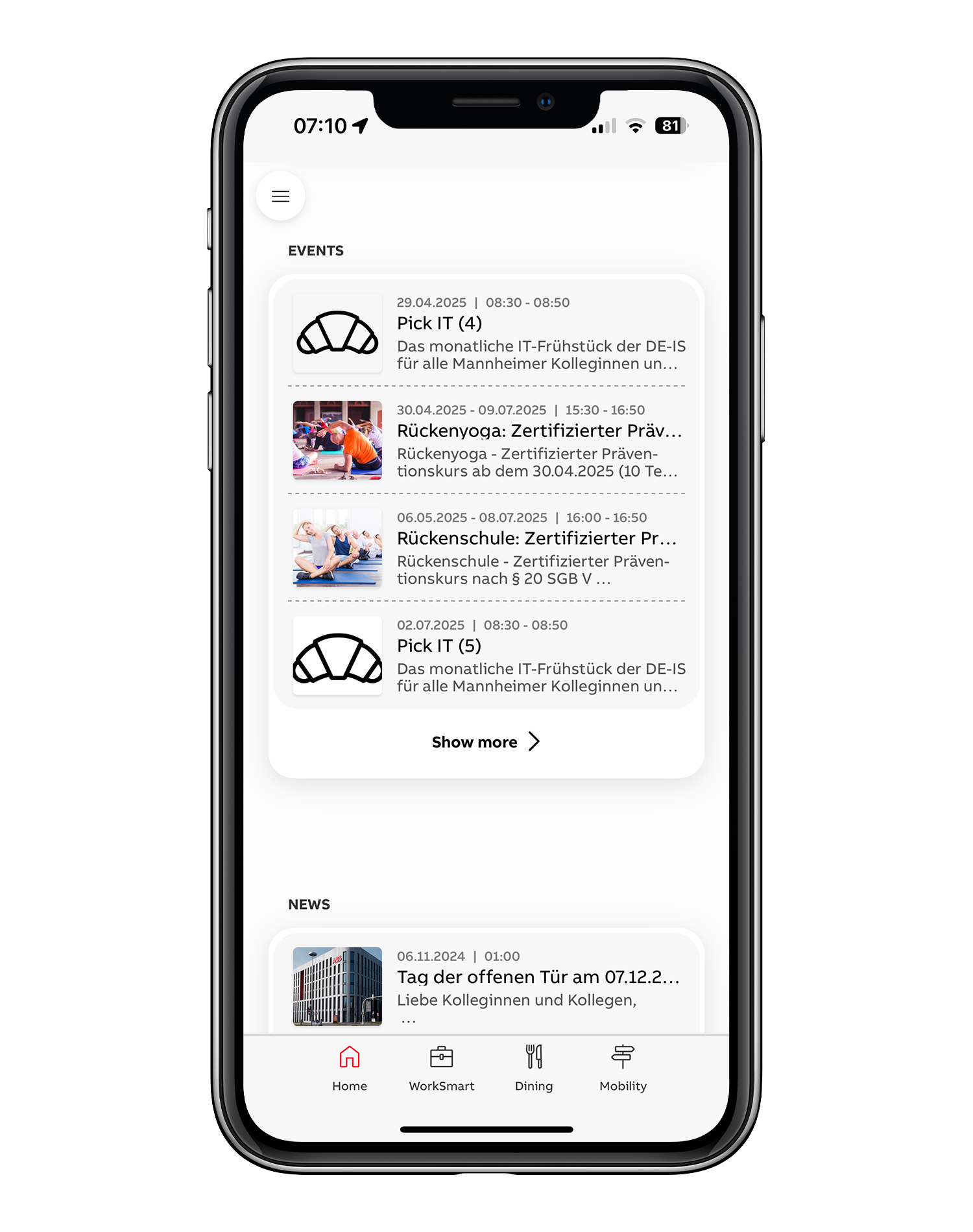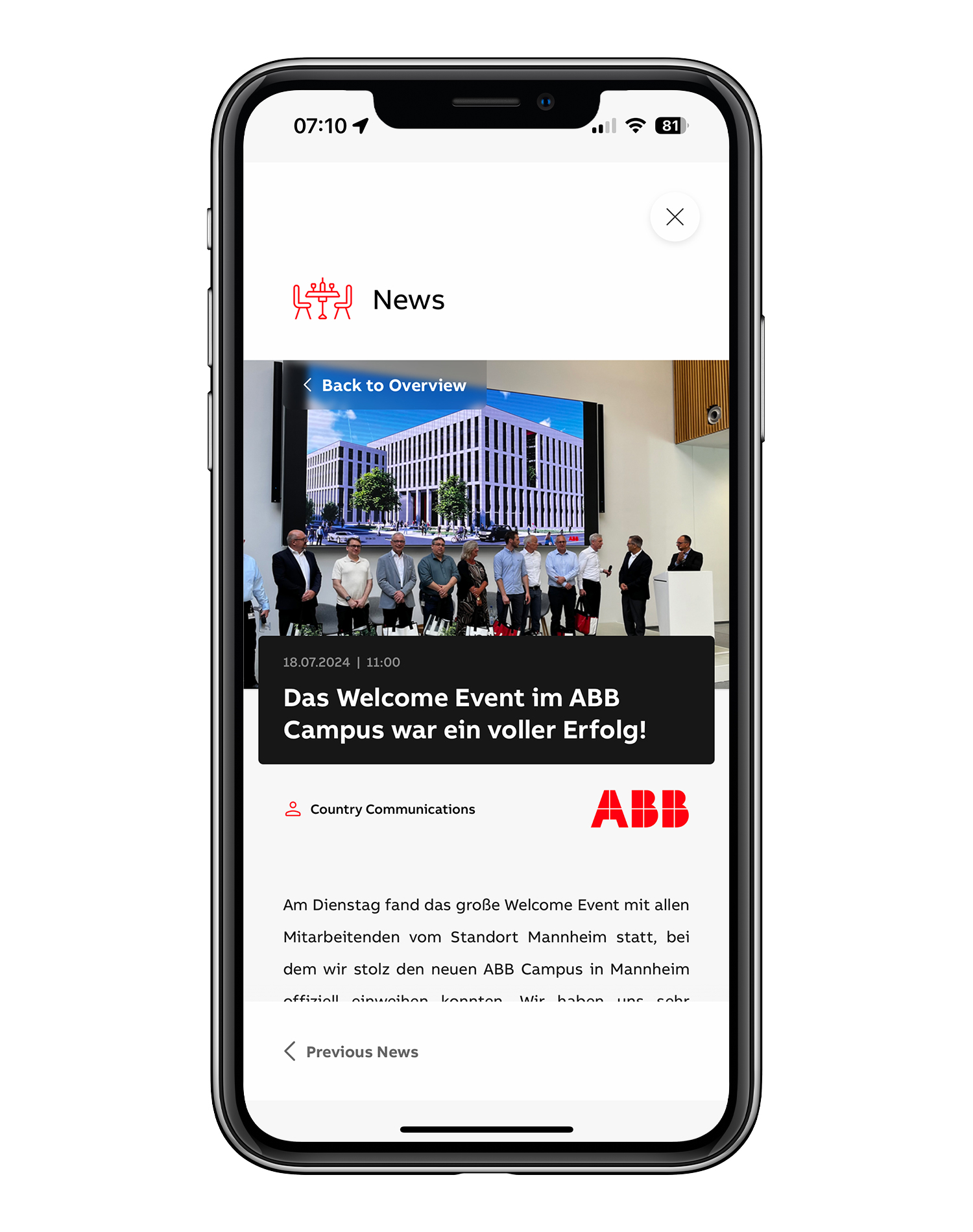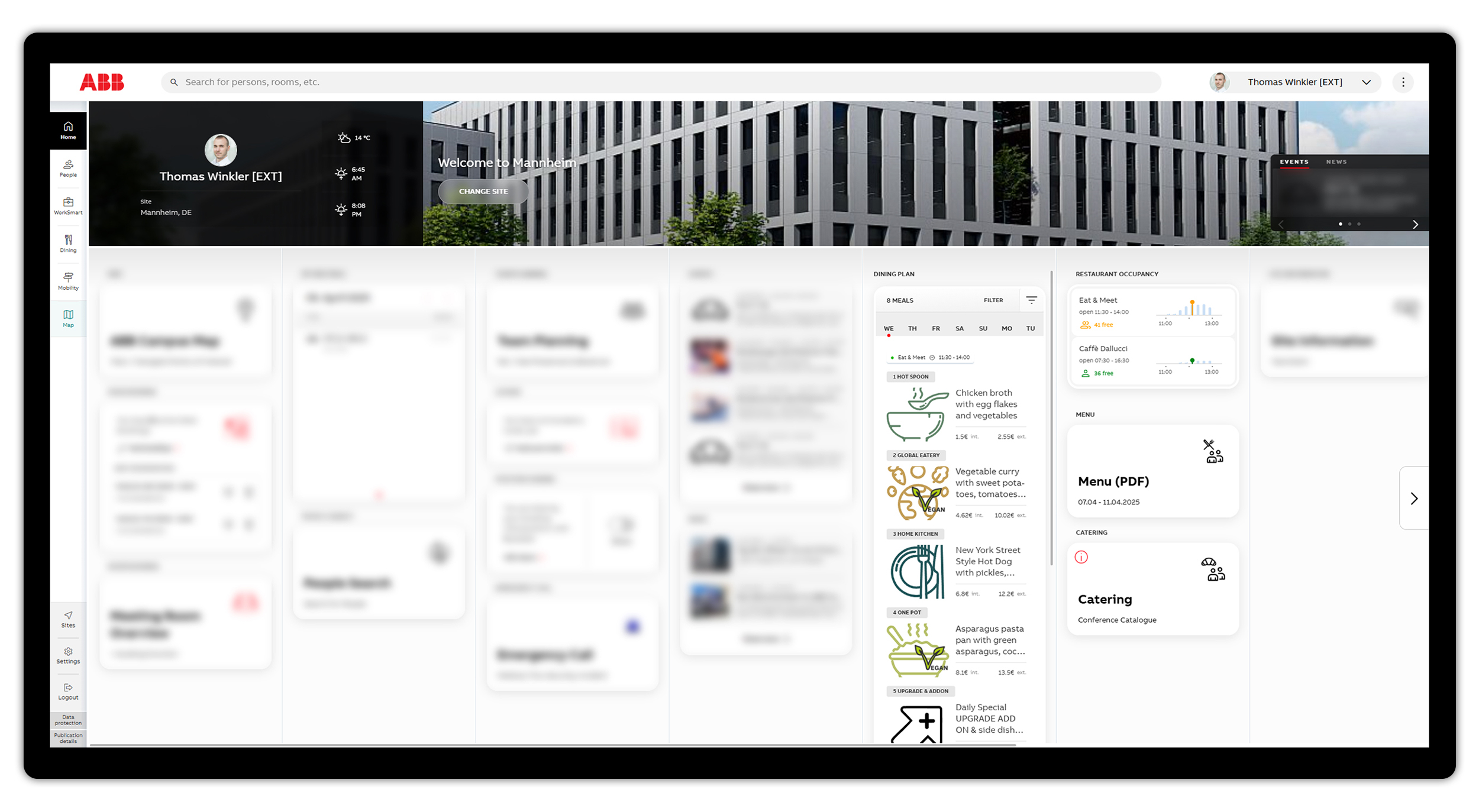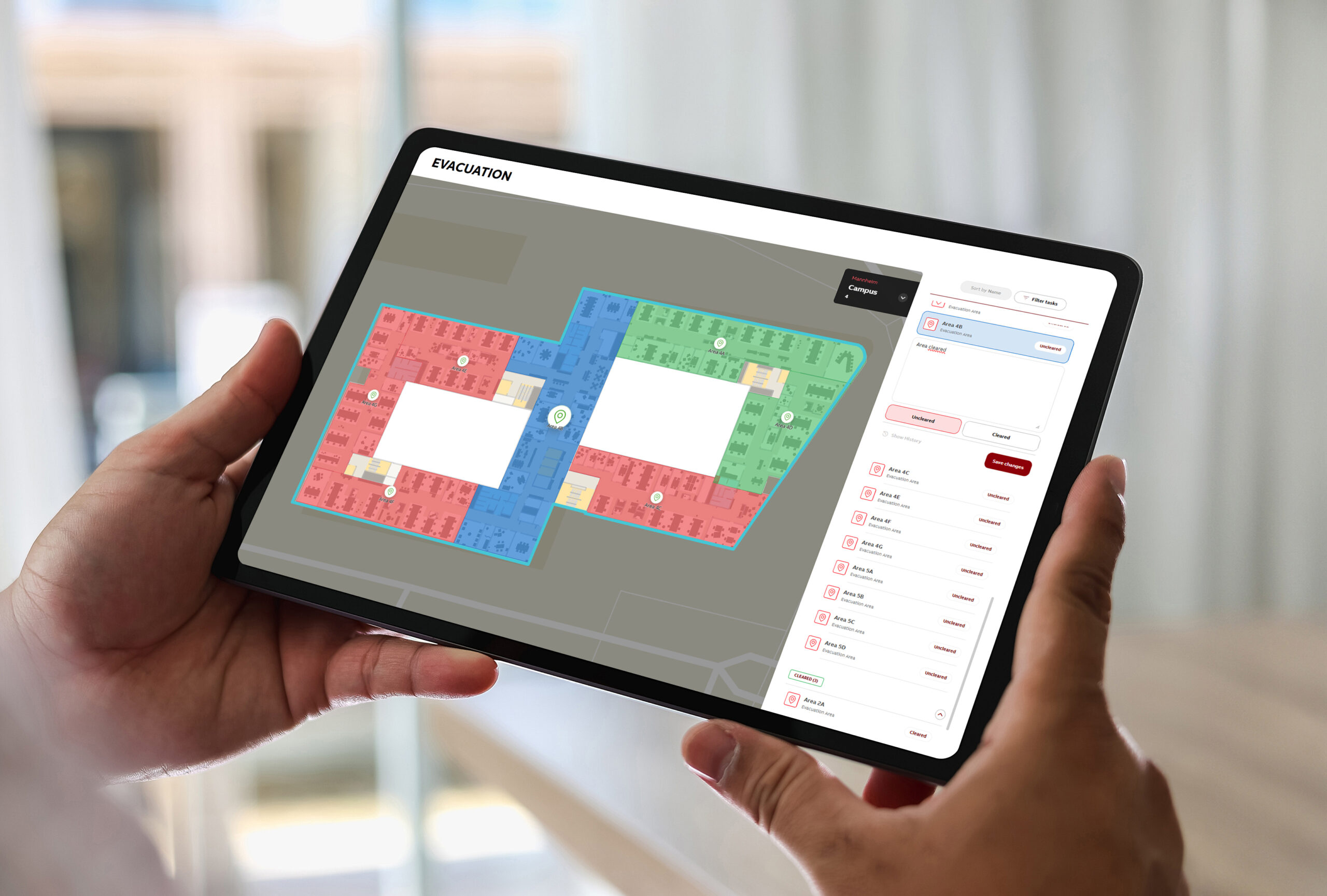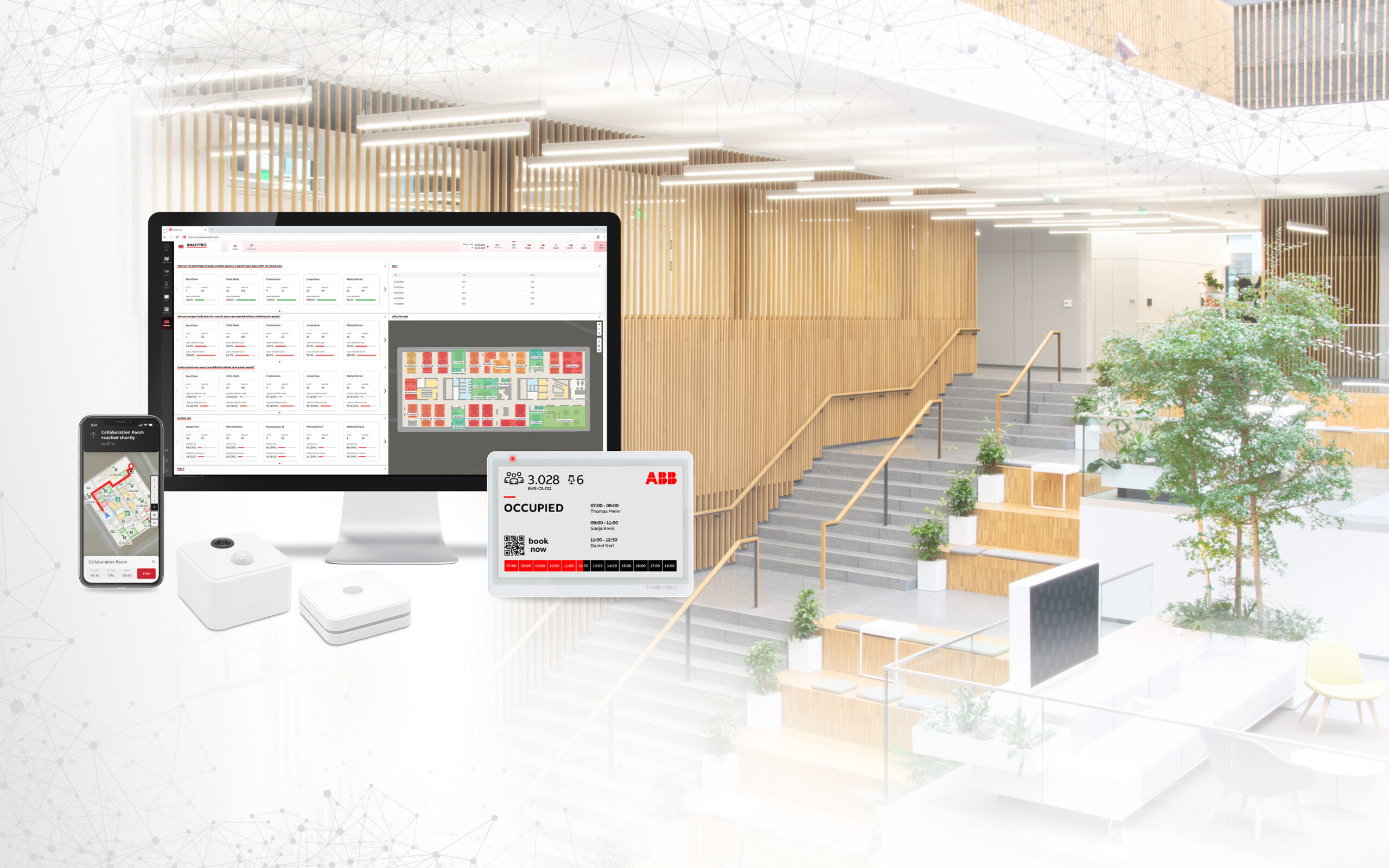ABB Smart Campus
Smart Spaces, Smarter Work – Digital Services
With the construction of the new ABB Campus in Mannheim, ABB AG has created an outstanding showcase for the integration of modern workspace and spatial concepts. The connected office building redefines standards in space utilization and enables flexible workplace models that meet today’s demands for collaboration, agility, and innovation. As a flagship for ABB’s “Future of Work” strategy, the Smart Campus exemplifies a seamless fusion of innovation, customer focus, and smart technology.
What is the ABB Smart Campus?
Spanning approximately 29,600 m² of gross floor area, the campus provides a cutting-edge working environment for around 1,300 employees from operations, R&D, and service departments. A particular emphasis was placed on multifunctional spaces that support both collaboration and focused work. Flexible workplace solutions align with the needs of an increasingly agile and digital work culture.
A key pillar of the concept is the comprehensive implementation of infsoft’s integrated technology suite. This includes occupancy sensors, digital wayfinding, and solutions for asset tracking as well as the booking of workspaces, meeting rooms, and lockers.
The infsoft LocAware platform® consolidates all collected data and provides it in a structured format to various subsystems.
A standout feature is the platform’s bidirectional communication with on-site service offerings. This enables, for example, demand-driven cleaning based on actual space utilization—ensuring efficient operations and sustainable resource management.
Since June 2024, this intelligent all-in-one solution has been available to all employees on site. It enhances daily operations, fosters collaboration, and drives overall efficiency.
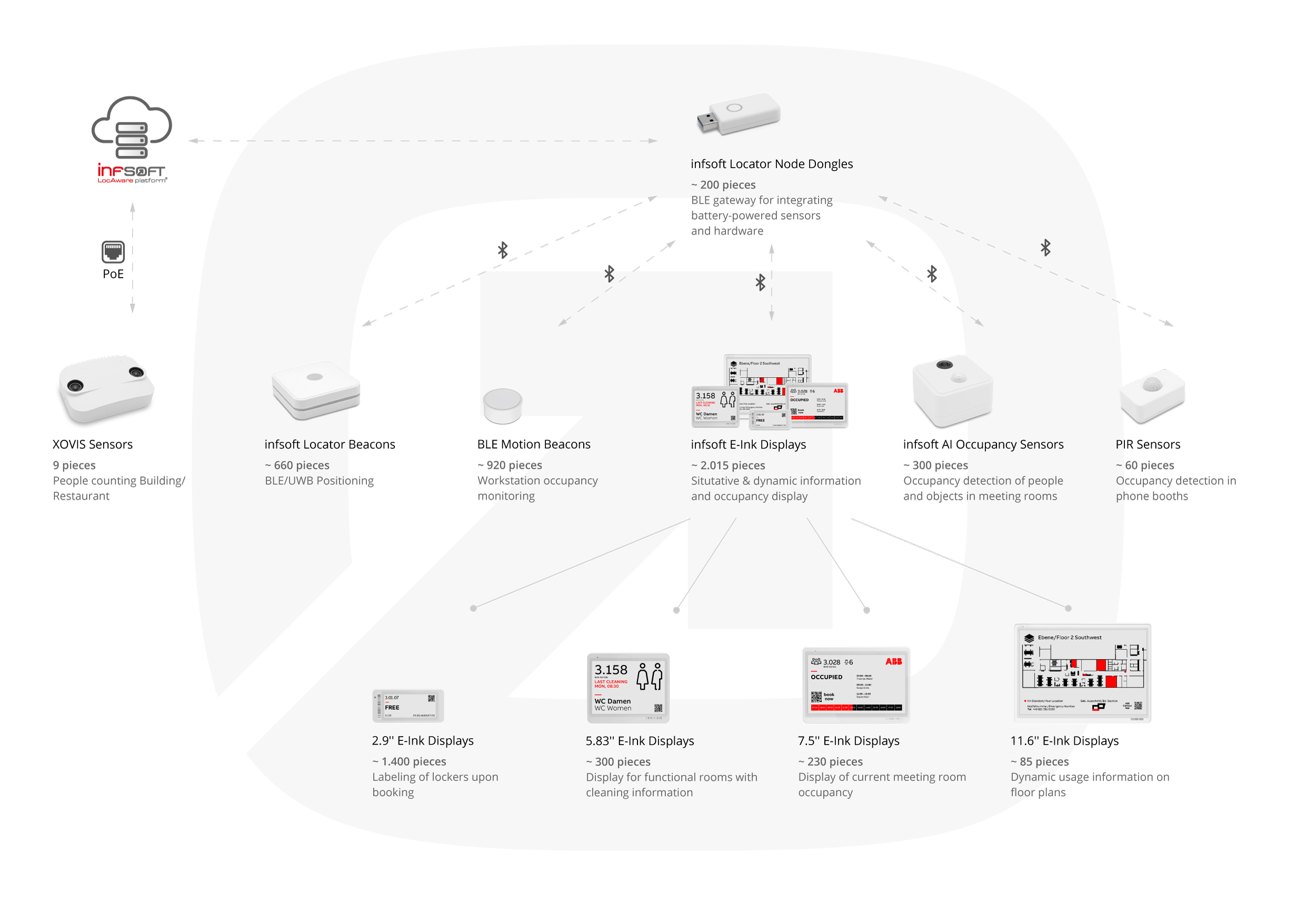
Innovative Features and Solutions
Digital Signage
Battery-powered E-Ink displays are used at the site to provide a wide range of information in an efficient and innovative way. The displays are ideal for displaying up-to-the-minute information in areas such as function and meeting rooms, lockers and on floor plans. Thanks to their low-energy technology, combined with Bluetooth Low Energy (BLE), the E-Ink displays not only offer an efficient and durable solution for digital signage, but also extend their benefits with additional functions. In particular, they can actively contribute to localization by being integrated into existing indoor navigation systems. This enables precise localization of objects or people in real time, making them an essential part of the modern ABB smart building concept.
Further advantages of this hardware include the integrated multi-colored LED indicator, which provides additional visual cues, for example for navigation or status display. If the exact location of the locker cannot be found on site straight away, the app can be used to make an LED light in the infsoft E-Ink Display Beacon light up in color for around 10 seconds. The displays always guarantee up-to-date information without any manual effort thanks to automated updating in real time.
E-Ink displays are used in a wide range of applications, whereby their size plays an important role.
As mentioned in the following sections, smaller displays are ideal for individual applications such as the labeling of lockers or rooms. They offer a compact and efficient way of providing targeted information that is directly relevant on site. Larger displays, on the other hand, are ideal for displaying complex content such as floor plans, directions or extensive information at a glance, making them particularly useful in public areas or large buildings.
This flexibility makes E-Ink technology a versatile and sustainable solution for digital signage in modern working environments.
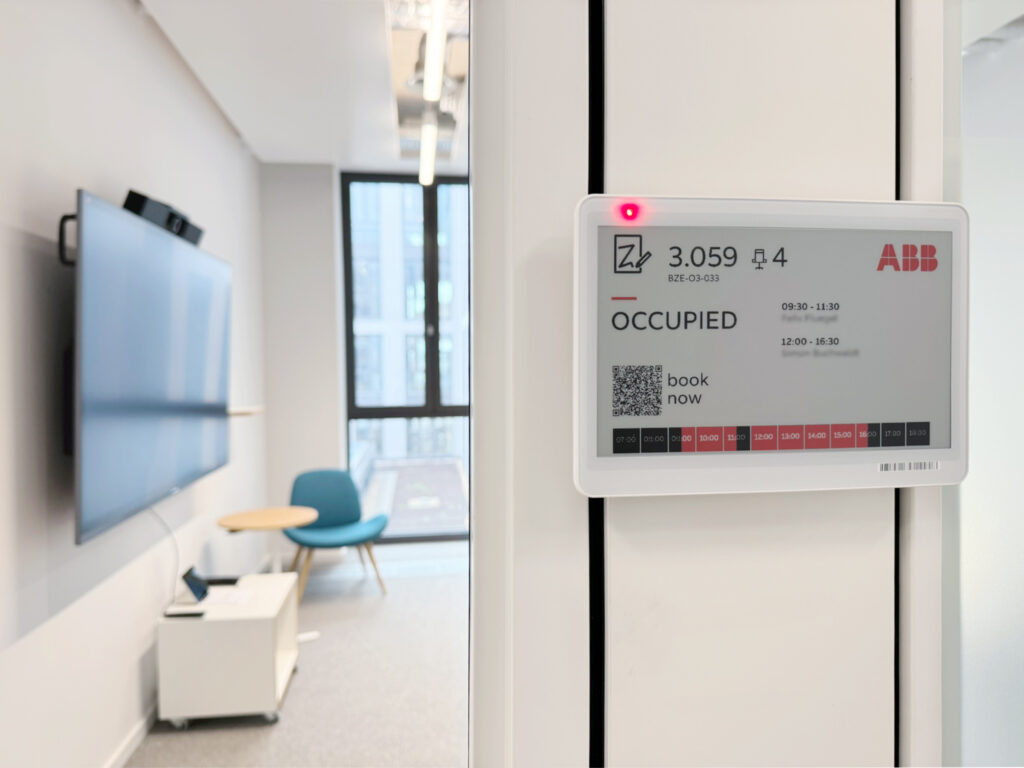
Conference Rooms
The displays in conference and meeting rooms show current bookings. The information comes from the connected Outlook calendars. Current occupancy, also based on the installed sensor technology for occupancy detection, is clearly visible via the red status LED. This display also offers the user an interaction option via QR code, so that ad hoc bookings, future reservations or fault messages can be entered. The Smart Campus app is the central tool along the various stations of the working day.
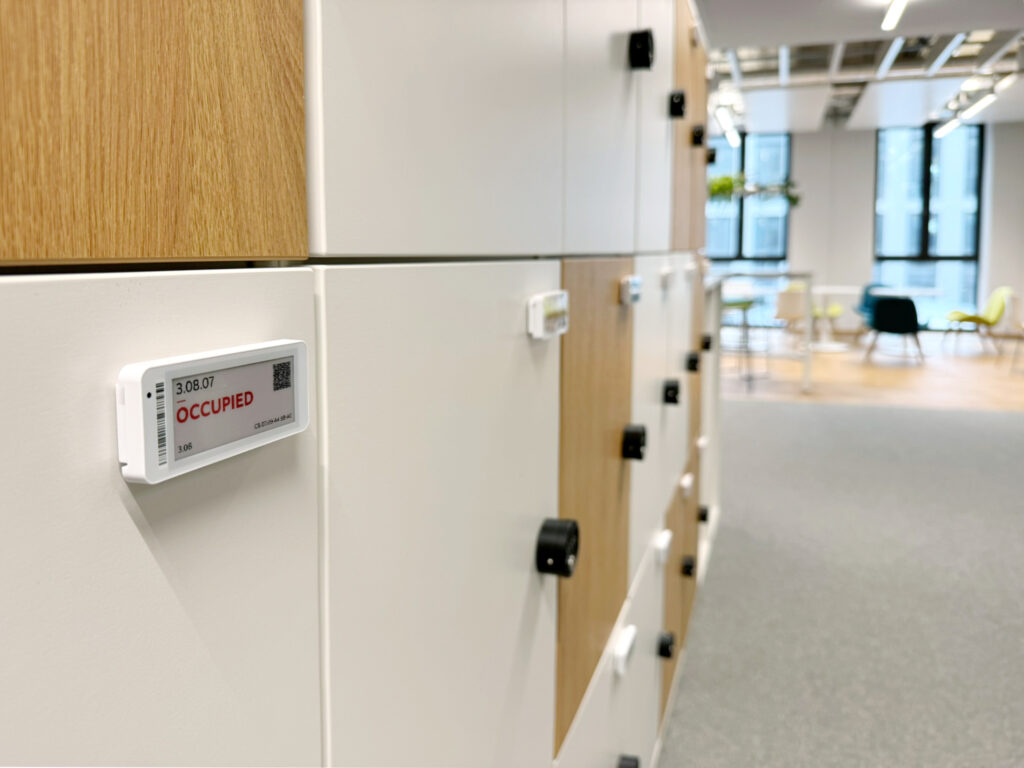
Lockers
Employees can book a locker for personal items and work materials such as keyboards etc. via the Smart Campus application. The lockers are equipped with displays that show the occupancy status. To make it easier to identify their own locker, users can use the application to flash the LED on the display in a color of their choice for a short time. The E-Inks also offer QR code interaction for booking via the Smart Campus application.
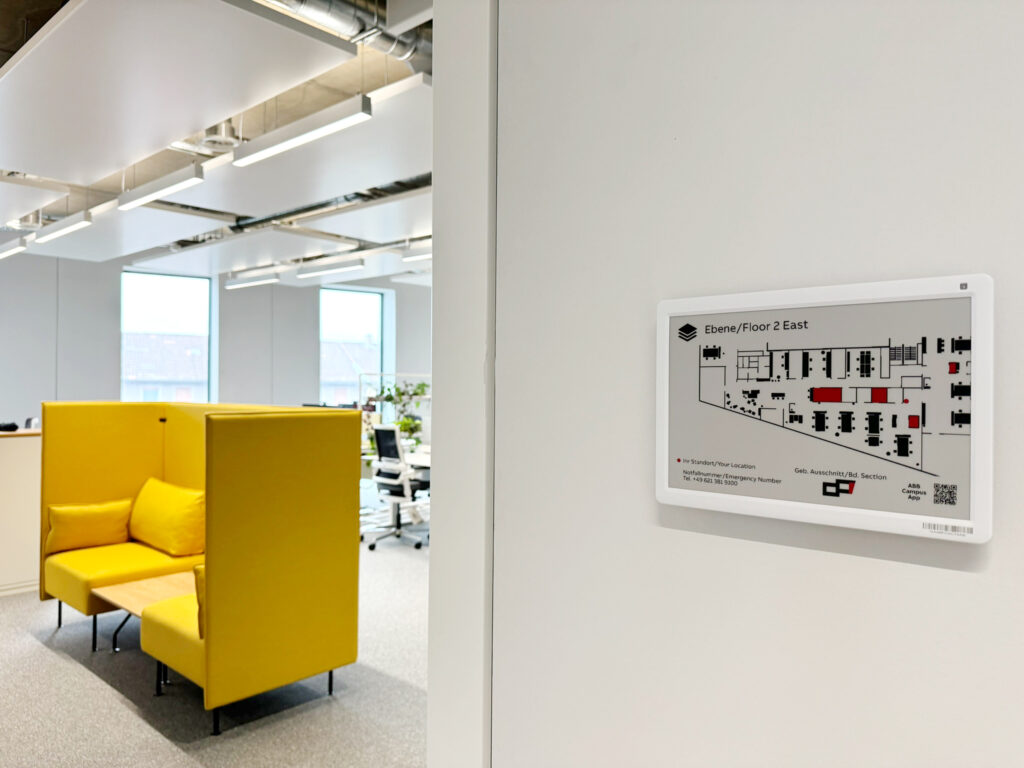
Floor Plans
The Smart Campus uses the digital signage solution to provide up-to-date live information on floor occupancy on every floor of the new building. The floor plans installed at strategic points show not only the current location but also the occupancy information of the conference rooms in real time. Other relevant POIs such as toilets and elevators are also clearly marked.
Utilization Analytics and Sensor Technology
ABB’s space management has access to a comprehensive utilization analysis based on the installed sensors and connected systems. Especially in the context of activity-based working and free seating concepts, the reporting provides decision-makers with a well-founded database for strategic corporate decisions regarding the space structure.
Occupancy and utilization information is also available in the Smart Campus application, significantly reducing search times for free workstations and meeting rooms for employees. A large number of sensor solutions are used for capacity utilization analyses at ABB to ensure precise and comprehensive data collection.
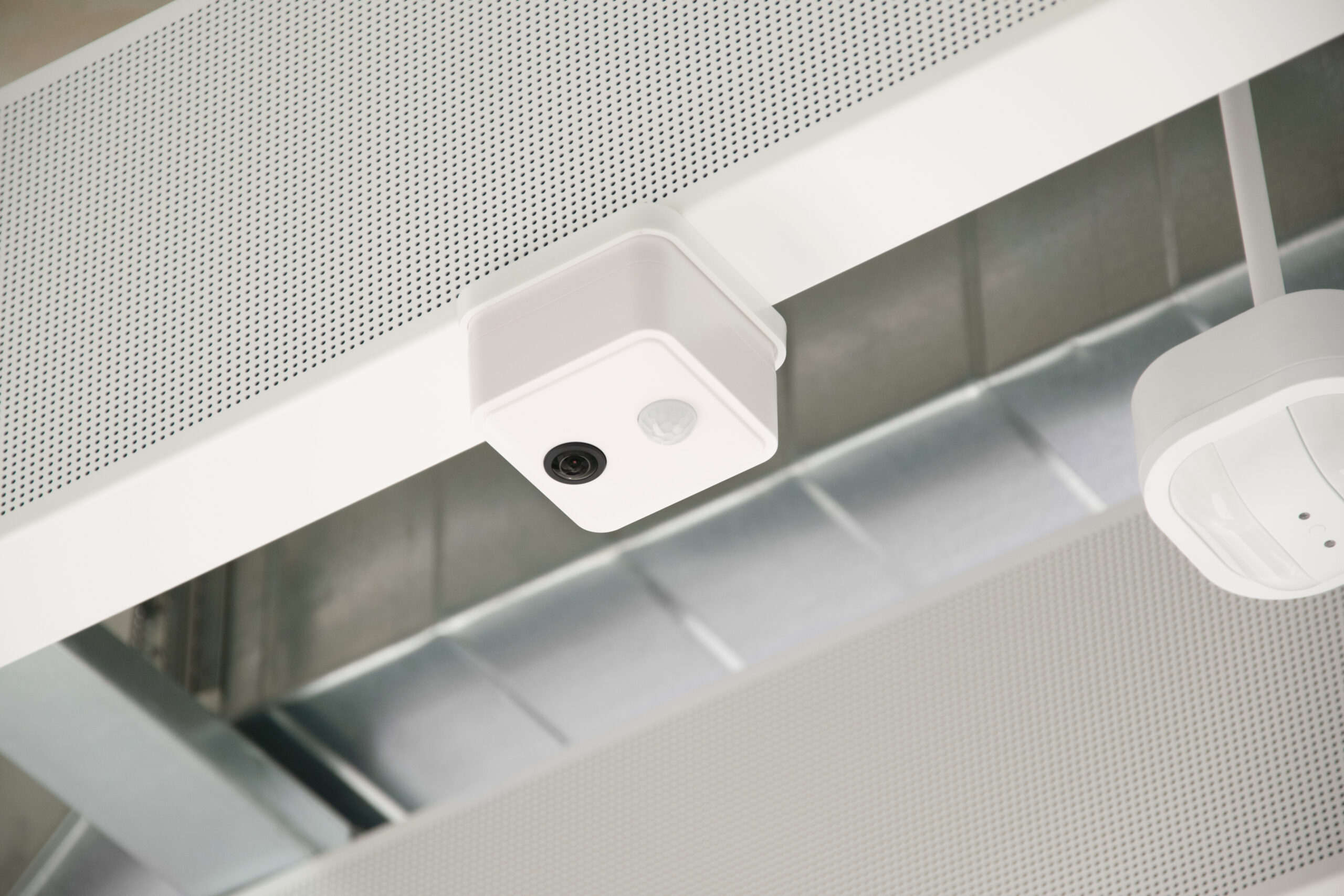
AI Occupancy Sensors for Smart Room Utilization
All meeting rooms on the campus are equipped with infsoft AI Occupancy Sensors, which, in addition to detecting and counting people, also enable passive occupancy indication through object recognition. The battery-operated sensors are installed on the ceiling of the room and, with their integrated PIR sensor, enable ad hoc detection when the resource is in use. Even when people are physically absent, occupancy can be reliably visualized by defined object classes such as laptops or keyboards.
In combination with the room’s booking information, auto-release functions are also implemented, which release the room after defined time intervals if no one is present within this time after the start of the meeting.
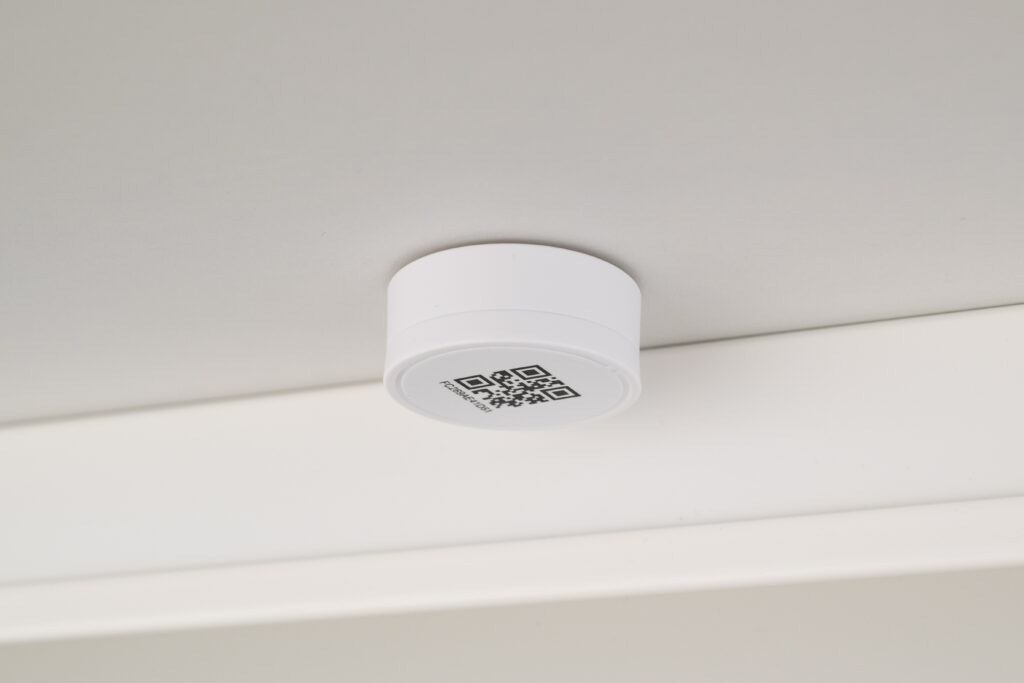
Motion Beacons for Precise Workplace Occupancy
Workstation occupancy within the Smart Campus is based on the booking information for workstation resources and the sensors installed at the desks.
To detect real occupancy, these are equipped with motion beacons that measure vibrations when the workstation is in use and mark it as occupied if a threshold value is exceeded. The sensors offer simple presence detection by means of vibrations and use additional business logic in the backend so that resources continue to be marked as occupied for defined time periods even if a person is absent.
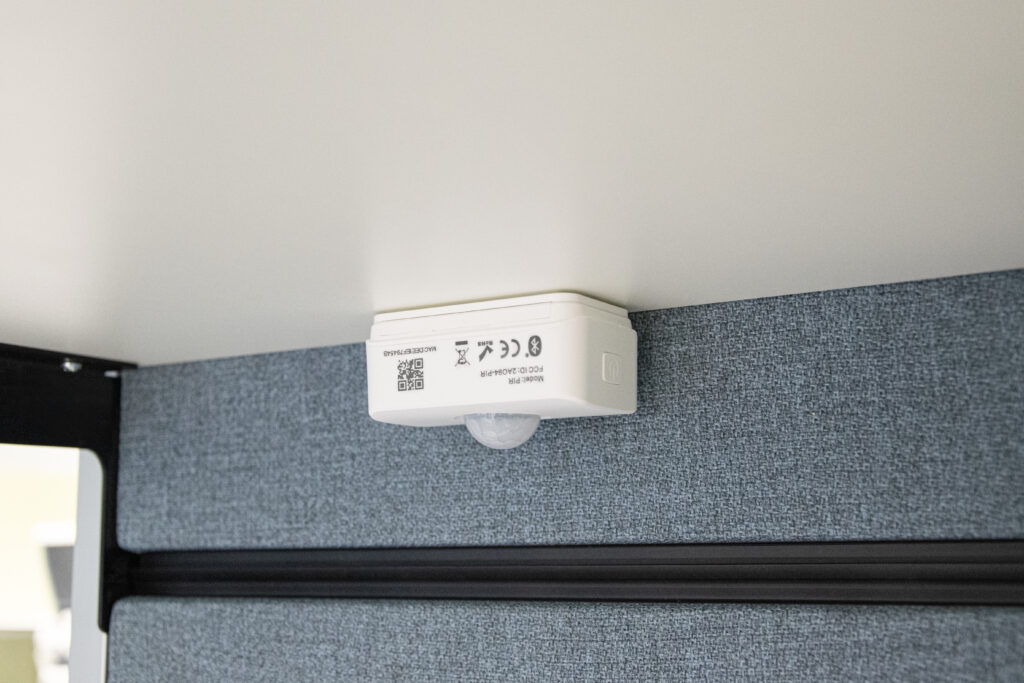
PIR Sensors for Occupancy in Phone Booths
The phone booths on campus are also equipped with sensors for occupancy detection. PIR sensors (passive infrared sensors) are used in the phone booths, which also determine a simple occupancy status based on movement.
The sensitivity and duration of the status message can be configured individually.
Detailed Insights – Space Utilization
The values and data recorded by the mentioned sensor systems are made available to the building operator as utilization analyses, e.g. in the form of heat maps. infsoft Occupancy offers in-depth data analyses for freely definable evaluation periods as well as real-time information. The reports can be customized using various filter options so that specific areas or specific times of day can be explicitly addressed.
Involevement of Various Stakeholders
Employees
Employees benefit from the Smart Campus app, which provides them with a quick and reliable overview of available workspace and room resources in real time. The app is designed to take into account the different needs and requirements of users.
With an intuitive user interface, it provides access to up-to-date information on the availability of workstations, meeting rooms and other resources. Various display options such as interactive room plans, list views or filter functions make it easier for employees to quickly find the right workstation or room for them.
In this way, the Smart Campus app helps to make the organization and use of work resources more efficient and to offer employees a modern, flexible working environment.
Space Management
infsoft Occupancy offers elaborate reports and management summaries on specific issues relating to the space portfolio. These include the number of meeting, focus, creative and collaboration rooms in the right sizes and the availability of rooms over definable time periods.
Particularly valuable are the detailed utilization charts, which go beyond pure usage and offer deeper insights into the spatial behavior of employees. These evaluations not only analyze the general use of workstations and meeting rooms, but also identify preferred rooms and room types. This gives companies a precise understanding of which rooms are particularly in demand and which functions they fulfill.
The use of shared desks (flexible workplaces) is also included in the analysis. This comprehensive approach enables companies to precisely evaluate workplace flexibility and efficiency and identify optimization potential. In this way, work environments can be specifically adapted to meet the needs of employees while ensuring efficient use of resources. These in-depth analyses provide companies with valuable insights that support both planning and long-term workplace design strategy.
The platform offers customizable dashboards that can be tailored to ABB’s specific needs and priorities. These dashboards enable intuitive visualization of trends, patterns and optimization potential. In addition, all reports and dashboards can be easily exported, facilitating integration into existing management and reporting systems.
Service
The occupancy analyzes on the Smart Campus create the base for the introduction of intelligent, demand-oriented cleaning concepts.
With the help of precise data on usage intensity and occupancy information, dynamic, resource-saving cleaning is implemented that is optimally tailored to the actual use of the areas and rooms.
The innovative “Cleaning on Demand” concept is being implemented in the Smart Campus in collaboration with Soobr. The aim is to combine efficiency and sustainability while ensuring a consistently high quality of service.
Soobr leverages the extensive usage data collected across all rooms and areas of the Smart Campus. This granular insight enables dynamic and demand-based control of cleaning schedules.
Instead of relying on rigid, standardized time plans, cleaning operations are aligned with actual space utilization. The result: optimized workflows, significant savings in resources such as water, energy, and cleaning agents, and a more sustainable approach to facility management. This data-driven methodology ensures maximum operational efficiency while supporting environmentally responsible practices.
The seamless communication between Soobr and the infsoft LocAware platform® ensures smooth and efficient operations. All completed cleaning activities are recorded by Soobr and transmitted directly to the infsoft platform. The collected data is displayed in real time on E-Ink displays installed in key areas such as restrooms. Users can instantly see when a space was last cleaned and whether cleaning is currently in progress—ensuring full transparency at a glance. This intelligent cleaning concept not only enhances the efficiency and sustainability of facility services but also improves the overall user experience. At the same time, cleaning staff benefit from optimized workflows: unnecessary tasks are eliminated, and efforts can be targeted where they’re needed most. Cleaning on Demand is a key component of a modern, sustainable, and smart campus management strategy.
Everyday Work at the Smart Campus
Mobility
Overview of public transport, parking spaces & charging stations – The Smart Campus application supports ABB employees with a variety of practical functions even before they arrive. The application provides information on public transport stops around the Mannheim campus and visualizes current charging station occupancy for electric and hybrid vehicles in the parking garage. The data comes from ABB’s own energy management system “OPTIMAX”.
Working on Site
Resource booking, collaboration & orientation – Employees can book a workstation up to two weeks in advance or spontaneously via the Smart Campus application.
Card-based with real-time occupancy for immediate use or via the planning tool, which also supports multi-day bookings and categorizes workstations according to the Activity Based Working concept – booking workstations is quick and easy for users. The booking can be shared with colleagues via Team Planning, making it easy to work collaboratively within the same work zone.
Lockers for personal belongings and work equipment are available to all employees and are distributed across the standard floors. The Smart Campus app provides an overview of available and occupied lockers with booking options. All lockers are equipped with a digital display for additional visualization on site.
Users can also get support for suitable meeting rooms within the application. In addition to direct bookings via the interactive campus map, the app offers a room overview with filter functions so that available rooms can be selected and booked based on the specified criteria such as capacity, equipment features and the like. Ad hoc bookings are also possible via the room displays using QR code interaction. An integrated calendar provides a personalized overview of the day’s appointments and allows direct navigation to the room. Automatic positioning with an accuracy of <0.5m is available throughout the campus building, enabling directions to any destination on the site.
The autorelease function for meeting rooms is based on advanced technologies such as AI and PIR sensors, which ensure efficient use of resources. If the PIR sensor does not detect anyone in the room for a period of 10 minutes, the host is automatically notified. They receive a push message and an email asking them to indicate whether the room is still required or should be released. If the host decides to release the room, it is immediately made available for booking by other users. If the room is still required, the timer is reset and a new 10-minute cycle begins. Meanwhile, the PIR sensor continuously checks whether occupancy is detected. The push notification overlays the app and cannot be ignored to ensure that the request is processed. If the organizer leaves the notification and email unanswered, the room is automatically released after another 10 minutes. This procedure guarantees flexible, needs-based room usage and minimizes unused time slots.
Services
Ticketing, visitor management & events/news – In the event of any disruptions to the media technology of a meeting resource, the workstation or other service cases, the Smart Campus app offers a ticket module with which service tickets can be created and assigned to the responsible work groups based on a category selection. At ABB, interfaces to ServiceNow (IT-related faults) and the service provider WISAG (issues relating to the building and other services) are connected for this purpose. Open tickets, including those of other users, are displayed in the app on an area basis, so that multiple notifications are minimized. These are also visualized on the room displays.
Connected to the “EnterSmart” visitor management system, the Smart Campus app offers an additional channel for visitor registration. This includes all process steps such as digital safety instructions and information from ABB reception staff. The inviter also receives status information, such as when the visitor checks in at reception.
Employees can find a detailed overview of events and news in the app, reflecting the lively Mannheim campus. Interesting data on the building’s current energy consumption, photovoltaic feed-in and charging station consumption can also be called up.
Food & Dining
Meal plan, canteen utilization & catering orders – In addition to snacks in Caffè Dalluci, the company restaurant Eat & Meet offers a variety of lunch dishes that can be called up in the Smart Campus app a week in advance. Linked filter options allow employees to enter their personal preferences (e.g. exclude allergens) and receive a menu selection tailored to them. The canteen operator “Eurest” supplies the data to a provided interface. The information on current capacity utilization, including available seats, provides helpful guidance on the timing of the coffee and restaurant visit.
The Smart Campus app accompanies ABB employees seamlessly through their day-to-day work and offers comprehensive information and functions. This allows users to concentrate fully on their work and benefit from a supportive, integrated platform that makes working efficient and pleasant.
Support for Evacuation Personnel
In the event of a fire or evacuation alarm, a dedicated module supports designated ABB personnel in carrying out a structured evacuation of the campus. Access to this functionality is restricted to authorized users to ensure targeted and efficient action in critical situations.
Using an automatically synchronized map, responsible staff can document in real time which areas have already been checked. All reports such as whether an area has been cleared or a person has been encountered are centrally logged, including optional comments, timestamps, and sender information, ensuring full traceability.
The module provides clear visual feedback during emergencies and ensures transparency regarding the progress of the evacuation.
Smart Spaces, Smarter Work
The ABB Campus in Mannheim is a striking example of how innovative technologies and forward-thinking concepts can transform the world of work. With a seamless blend of modern architecture, digital infrastructure, and a strong focus on employee needs, the result is a fully connected Smart Campus that sets new standards.
From digital signage solutions and precise space utilization analytics to comprehensive sensor technology, the campus offers all the tools required for efficient space management and sustainable process optimization. Complementing this ecosystem, the Smart Campus app provides employees with an intuitive and flexible interface for booking workstations, meeting rooms, and lockers—making daily work life simpler and more efficient. Mobility has also been reimagined: electric vehicle charging stations, bicycle parking, and direct access to public transport promote eco-friendly alternatives to private car use.
A key focus was placed on open, flexible spatial design that fosters communication and collaboration. Adaptive office areas, quiet zones, and creative spaces provide the ideal setting for every work scenario.
By strategically implementing smart building technologies, ABB has created a dynamic work environment that continuously adapts to the needs of its users. Real-time data supports the reduction of operational costs while enhancing both comfort and functionality.
ABB AG demonstrates how technological innovation can boost not only efficiency and agility, but also employee satisfaction and productivity. The Smart Campus is more than just a building—it is a living example of digital transformation in action, and a blueprint for the workplaces of tomorrow.
Feel free to contact us for a personalized consultation regarding a similar project.
Success Story as PDF

